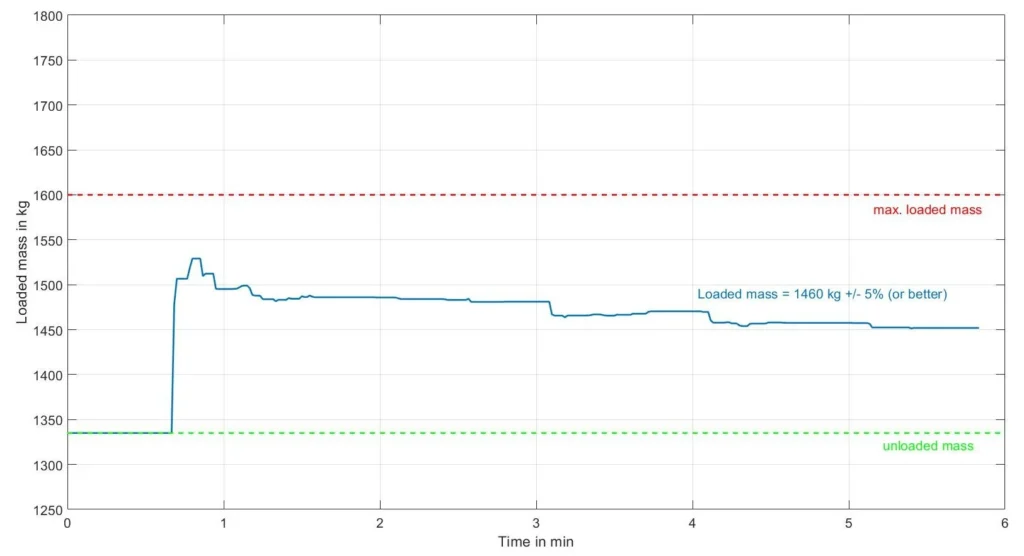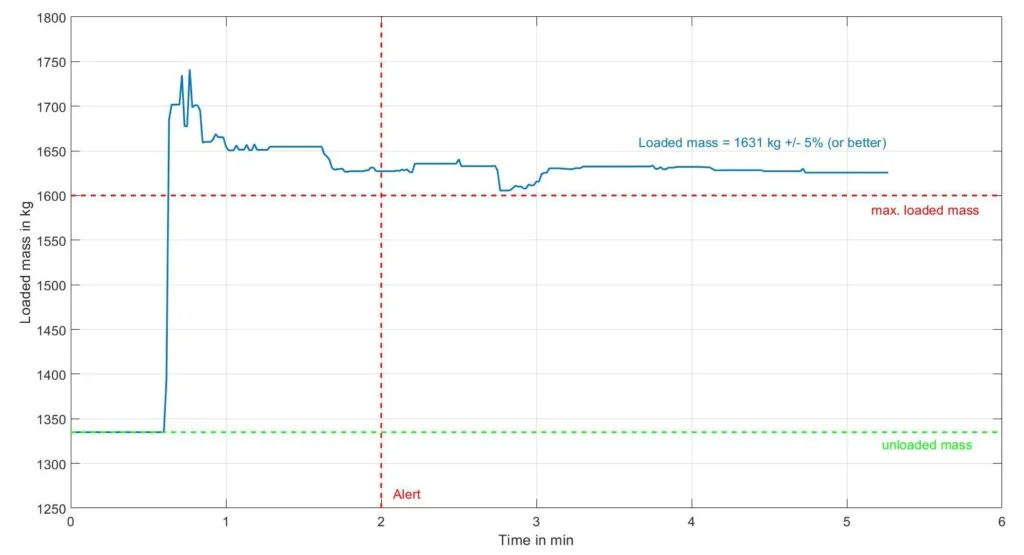Measure the precise vehicle mass during each trip after just 5 min driving
Discover our precise vehicle overload detection: monitor the mass of your trucks while they are driving, with a software-based solution made in Germany.
Application
Light commercial vehicles | passenger cars
Questions to solve
- What is the current vehicle mass including load?
- Is the vehicle overloaded by more than 5%?
- Is there an impact on safety (vehicle dynamics, braking)?
Use case
A fleet operator manages a fleet of light delivery trucks of various models. Commercially available GPS modules and telematics systems allow convenient geo-tracking and route optimization.
Today, there is one insight missing: The fleet manager knows that fleet management can be improved, if a quick alert is available that one of the vehicles is being overloaded during the day.
Additionally, monitoring the loading profiles of all vehicles allows the fleet manager to distribute heavy load conditions better over the whole fleet, in order to increase each vehicle’s availability and lifetime.
However, for the fleet manager, the rollout of the solution must be as easy as possible: integrated into the existing telematics, with no effort to parameterize all the vehicle models manually, and with no effort from the driver.
Virtual Sensors as solution for a vehicle overload detection system
COMPREDICT’s machine learning hub offers a convenient interface via API incl. SDK for full integration into an existing telematics solution. For each vehicle of the fleet, the platform runs an automatic setup during approximately half an hour of driving, at initial connection. After this, the virtual sensor for online and real-time mass estimation is ready. The platform monitors all trips, vehicle per vehicle. It knows the unloaded mass and the maximum authorized mass for each of them. At the start of each new trip, the loaded vehicle mass is being estimated.


As an extension, our algorithms can also determine when there is a safety-relevant impact of the overload on the vehicle’s dynamic behavior, e.g. during braking or in curves.
Signals required for vehicle overload detection
Our virtual sensors for vehicle overload require access to only a few standard CAN bus signals, typically:
- Wheel speed
- Engine torque and speed
- Lateral dynamics
Additional signals can contribute to the precision of the result, still they are not mandatory.
Read more about our virtual sensors based on CAN bus signals (controller area network, a vehicle on-board data and control network).
Benefits for the fleet manager
Our solution provides
- Reliable overload alert during operation, for increased safety.
- Easy integration into existing telematics solution.
- Reliable and precise data allowing more balanced loading conditions between vehicles, to increase uptime and reduce maintenance costs.
